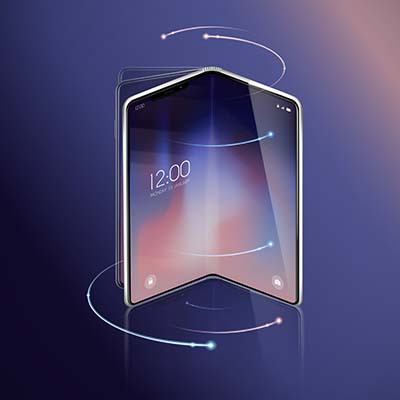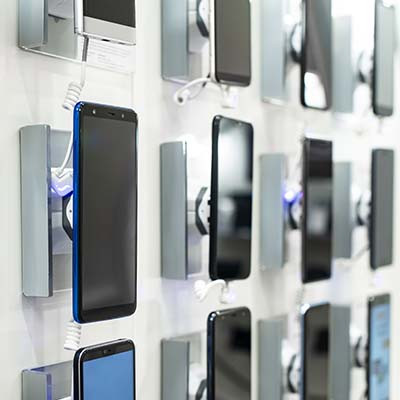It’s not hyperbole to suggest that many people in business these days prefer digital communication over the alternative. Smartphones have evolved over time and adapted to this need. That said, using a smartphone to communicate does still have its fair share of unwritten rules to follow. Let’s discuss some of the dos and don’ts of smartphones.
415 IT Blog
If you were to ask anyone under the age of 30 what the most important invention of their lifetime is, you may be surprised how many of them would say “the smartphone”. These devices have revolutionized the way that people communicate, work, and play, but like any other technology, the form factor may not be here forever. So what’s next after the smartphone? We unpack what technologies may replace the smartphone as the next big jump in personal computing.
Smartphones are everywhere. Nearly everyone has one either in their pocket or in their hand and that fact would make you think that the underlying smartphone market is one that is remarkably strong. This really isn’t the case. Today, we’ll take a brief look at the smartphone market and how a lack of true innovation is one of the reasons the industry has seen large decreases in sales.
Mobile utilization in business has been on the rise for quite some time and today’s business has to stop and confront the issues that come along with it before they become problems. Like any technology that people have come to rely on outside of their job, a business’ first consideration is how to make use of it for business as well. This month, we thought we would take a look at some of the pain points organizations can experience when managing their mobile devices.
Mobile devices have changed the world. They’ve definitely changed the way people do business. The prevailing sentiment is smartphone innovation has stagnated a bit over the past few years as most of the flagship smartphones are using extremely fast processors, data storage has moved to the cloud, and many other factors. Just look at the new iPhone, which traditionally looks just like the last iPhone. Today, we’ll take a look at what you need to know when buying your new phone.
Did you know that people tend to spend an average of 3-5 hours on their phones every day? The smartphone might be one of the most useful modern tools out there, but it can get in the way of running your business if you let it. Here are a couple of ways you can get the most out of your smartphone for business purposes.
For the past two weeks we have looked at some of the best phones and some that bring the most value. This week, we turned our gaze to a form factor that is only a couple of years old, but seems to be the future of mobile technology, foldable screens. The different form factors made possible by foldable OLED technology make the future of mobile devices more exciting. Let’s take a look at three of the top foldable devices right now.
Last week we took a look at three of the most impressive phones on the market. Those phones all cost a pretty penny. Not that you will get a new smartphone for a song, but it’s just not feasible for most people to drop over a thousand bucks on a new smartphone. Most cellular carriers make it palatable by allowing people to finance the phones as a part of their monthly cellular service, but if you are looking for a strong device that comes in under $500, here are three good options.
You always read that “business has changed”. This is true because people have changed. More people use their mobile devices for a majority of their communication, their browsing, and a lot more, and it is changing the way business is conducted; it’s just not always easy to separate work use from personal usage. Let’s take a look at some of the ways the smartphone has changed the way people approach work, and how that shift in perspective has changed business.
Make no mistake, the impact that your mobile device strategy has on your business is an important one. It can make or break your organization’s security, as well as stymie or encourage your organization’s productivity. Therefore, you should do everything in your power to make sure that your mobile device management platform is working to your company’s advantage. Let’s take a look at some of the features that all good MDM platforms should enable.
As you might expect, the remote circumstances that many business professionals have found themselves in as of late have created challenges that must be overcome, especially in regards to the access and dissemination of data to mobile devices. Let’s examine the mobile device’s role in the modern business and how you can ensure these great tools are being used properly for your organization.
Smartphones are everywhere. You go to the supermarket, people are on their phones, you go to the gym, people are on their phones. Go into the office? People are constantly on their phones. All that phone use cannot be in the best interest to organizational profitability. The question becomes, do smartphones help or hurt business? Let’s get into it.
We’ve looked at the best phones (flagships), we’ve looked at some of the most innovative devices, but what happens if you don’t have $1,000+ to buy a smartphone? Many of the main manufacturers spend a lot of their marketing budgets highlighting their most expensive devices, so a lot of people don’t know that there are some very capable smartphones that don’t come with four-figure price tags. Let’s take a look at some phones that people can get that won’t empty their wallets.
Last week we looked at the flagship smartphones that are currently available, and while they are undeniably the best smartphones available today, they may not be the most interesting. In late 2018, manufacturers started releasing smartphones with folding screens. These devices didn’t work as well as the modern user needed them to, but it did signal that manufacturers are trying to innovate and extend what’s possible for the modern smartphone.
The smartphone is the most important device for millions of people. In fact, if the numbers are to be believed, many people have moved completely away from using traditional computers. Today’s flagship smartphones need a combination of fast connectivity, reliability, and longevity so that users can justify the lofty price tags associated with these devices. Let’s take a look at four of the most noteworthy smartphones available right now.
Think about how happy you are when you first get your new phone. If you are like most of us you can’t keep your hands off of it. You try all the new features out and mutter to yourself, “wow, this is so cool”. The enthusiasm that people have for their new mobile devices can be a major benefit for the company they work for, too. Today, we are going to discuss how, with all the features and powerful computing power, you can work effectively on your smartphone.
The smartphone has become the most utilized computing device in the world. As a result, consumers are looking for the very best of them to get the functionality they demand. The current set of flagship smartphones that are available provide all types of benefits for business, for commerce, and for networking. Today, we’re going to take a look at the best phones you can buy heading into 2020.
Smartphones are a marvel of modern ingenuity. After looking at employee smartphone use as a problem for much of the past few years, today’s businesses have begun to amend that strategy and are now using employee devices to their advantage. With such a large percentage of today’s workers actively using smartphones, it only makes sense for businesses to try and incorporate their employees’ devices into their day-to-day operational strategy. Today, we’ll take a look at smartphones and how they’ve managed to go from nuisance to necessity.




















